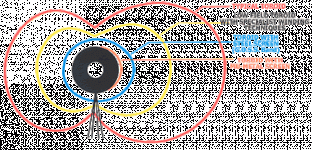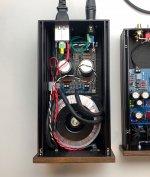Folks:
I've signed up for the latest UFSP group buy and have two (likely) dumb questions:
First, is there a disadvantage in using a 100 VA toroid instead of a 50 VA unit? The price differential at Antek is inconsequential and there will be room to spare in the power supply chassis. (And okay, a bonus question: is there an advantage in getting a toroid from Plitron or Primrose instead?)
Second, the link to the build guide seems to be broken (or I really am a dope). I was not successful in searching for the FSP build guide. Could anyone point the way?
Many thanks,
Scott
I've signed up for the latest UFSP group buy and have two (likely) dumb questions:
First, is there a disadvantage in using a 100 VA toroid instead of a 50 VA unit? The price differential at Antek is inconsequential and there will be room to spare in the power supply chassis. (And okay, a bonus question: is there an advantage in getting a toroid from Plitron or Primrose instead?)
Second, the link to the build guide seems to be broken (or I really am a dope). I was not successful in searching for the FSP build guide. Could anyone point the way?
Many thanks,
Scott
Meaning single 100VA toroid of two independent 32V secondaries? If talking double trafos, situation ends up total VA super heavy for the job. Bigger cores also throw wider stronger stray fields. A very important consideration when in the vicinity of tiny signal carrying turntable cables and a high gain preamp box.
Antek has been shown a lot in successful USA based builds here. They are supposed to be using some stray field screening also. How effective I am not sure. Never used one myself because Antek is no good deal to be imported in Europe. We usually go for Toroidy here when looking for better than averagely made donuts. We used to go for Selectronic R-Core before but that nice French electronics retail chain went sadly bust.
FSP build guide is in post #9980. You can also go there manually by flipping back pages. Link from #1 still works for me though.
BTW this nice self explanatory pic comes from Talema-Nuvotem a well known transformer manufacturer.
Antek has been shown a lot in successful USA based builds here. They are supposed to be using some stray field screening also. How effective I am not sure. Never used one myself because Antek is no good deal to be imported in Europe. We usually go for Toroidy here when looking for better than averagely made donuts. We used to go for Selectronic R-Core before but that nice French electronics retail chain went sadly bust.
FSP build guide is in post #9980. You can also go there manually by flipping back pages. Link from #1 still works for me though.
BTW this nice self explanatory pic comes from Talema-Nuvotem a well known transformer manufacturer.
Attachments
Scott,
I wouldn’t use a big transformer in this case, and anyway, 50VA is humongous for the job. The primary reason why the 50VA Antek is chosen is because it’s the smallest they make with a shield.
As for the build guide, I’m going to give the ultra boards the full treatment. Pfarrell is going to design a chassis that you can have Modushop make. Will be really cool.
Start collecting the parts now, this will be coming along shortly...
I wouldn’t use a big transformer in this case, and anyway, 50VA is humongous for the job. The primary reason why the 50VA Antek is chosen is because it’s the smallest they make with a shield.
As for the build guide, I’m going to give the ultra boards the full treatment. Pfarrell is going to design a chassis that you can have Modushop make. Will be really cool.

Start collecting the parts now, this will be coming along shortly...
50VA is humongous for the job.
Here's the 50VA Antek in a 2U Galaxy (124 x 230D):
Galaxy 2U w/Aluminum Covers – diyAudio Store
Fits, just. It's a very nice brick of a power supply in hand.
Attachments
Last edited:
I have a couple of questions:
Salas:
The TP is now 4.0v for the UFSP instead of 3.6v for the FSP, are there any changes to the circuit for the 4.0v TP? LED forward voltage change?
6L6: Will the upcoming enclosure be singular or will there be a dual enclosure option (one for PS and one for UFSP)?
Salas:
The TP is now 4.0v for the UFSP instead of 3.6v for the FSP, are there any changes to the circuit for the 4.0v TP? LED forward voltage change?
6L6: Will the upcoming enclosure be singular or will there be a dual enclosure option (one for PS and one for UFSP)?
6L6: Will the upcoming enclosure be singular or will there be a dual enclosure option (one for PS and one for UFSP)?
(I'm answering for the maestro ;-)
Separate PSU—I'm not sure it would be possible to make it quiet with an all-in-one config... ? Not without a lot more rigmarole anyway....
Last edited:
Salas:
The TP is now 4.0v for the UFSP instead of 3.6v for the FSP, are there any changes to the circuit for the 4.0v TP? LED forward voltage change?
The T.P pads are now located to near before but more convenient circuit points. Its a little higher reference reading for that. It still represents the same balance from an alternative perspective. Not a make or break exact reading, 4V is a ballpark centering value that may drift some. Due to thermals as before.
Pfarrell is going to design a chassis that you can have Modushop make. Will be really cool.
6L6 & Pfarrell:
Had I known I might have held off, but the enclosures have already been ordered from Modushop. Probably just as well, as I want the UFSP to stylistically match the BA2018 I'm also building. Just don't make your design too cool.
Regards,
Scott
Hi All
I am finally getting round to build my phono pre after about 6 years of sitting in a drawer. My first question (of many I am sure) is around the Raw supply.
I have mains of around 241vac (UK) and with 2x18 secondaries I am getting 59vdc off the RAW board unloaded and wire links. I have some 2x15 traffo and they are giving 47vdc unloaded.
Is it better to use the 2x18vac with a 100R or so to try and pull the vdc closer to 50 or use the 2x15? Is 47vdc enough to drive the shunt?
Many thanks
Gareth
I am finally getting round to build my phono pre after about 6 years of sitting in a drawer. My first question (of many I am sure) is around the Raw supply.
I have mains of around 241vac (UK) and with 2x18 secondaries I am getting 59vdc off the RAW board unloaded and wire links. I have some 2x15 traffo and they are giving 47vdc unloaded.
Is it better to use the 2x18vac with a 100R or so to try and pull the vdc closer to 50 or use the 2x15? Is 47vdc enough to drive the shunt?
Many thanks
Gareth
Use the 15+15 one. More adequate in your situation no doubt. 47V unloaded is very good for driving the shunt. 5V Vin-Vout difference is enough for it to work well. But we allow more Vdif because the current draw is ~100mA only. The higher Vdif makes the input side CCS Mosfet faster with less parasitic capacitance without much dissipation penalty in this case.
Salas & Co.:
It's been my understanding that turning audio components on for use and off when done is the easiest way to hasten their demise; leaving components on all of the time reduces thermal stresses and (conveniently) ensures that the component is always warmed up and ready to play. While my big Class A amps are only turned on when needed, my soon-to-be-replaced Pearl / Ono phono amp has been left on since it was completed in 2007.
Is my understanding correct with regard to the UFSP, or should I plan on only turning it on when it is in use? For the record (ok, pun sort of intended), I rarely listen to my turntable more than 3-5 hours per week.
Thank you for the guidance!
Regards,
Scott
It's been my understanding that turning audio components on for use and off when done is the easiest way to hasten their demise; leaving components on all of the time reduces thermal stresses and (conveniently) ensures that the component is always warmed up and ready to play. While my big Class A amps are only turned on when needed, my soon-to-be-replaced Pearl / Ono phono amp has been left on since it was completed in 2007.
Is my understanding correct with regard to the UFSP, or should I plan on only turning it on when it is in use? For the record (ok, pun sort of intended), I rarely listen to my turntable more than 3-5 hours per week.
Thank you for the guidance!
Regards,
Scott
Shunt regs are power hogs in general but those in FSP and UFSP run at 100mA only so you can leave them on all the time if you will so choose. But you may see more than 10W consumption if you will measure the unit on a wall meter like a Kill A Watt.
Power factor and other losses in Tx and the raw PSU make chargeable AC mains consumption different than what DC Watts are spent inside the main unit.
Electrolytic capacitors double their life expectancy with each 10C ambient temperature less than their nominal rating so use a roomy and somewhat ventilated main phono box to let them live very very long.
In my view turning it off after a session and just turning it on one hour before the next session is a good compromise. For when not listening on and off many times in a day but occasionally in a week.
Power factor and other losses in Tx and the raw PSU make chargeable AC mains consumption different than what DC Watts are spent inside the main unit.
Electrolytic capacitors double their life expectancy with each 10C ambient temperature less than their nominal rating so use a roomy and somewhat ventilated main phono box to let them live very very long.
In my view turning it off after a session and just turning it on one hour before the next session is a good compromise. For when not listening on and off many times in a day but occasionally in a week.
- Home
- Source & Line
- Analogue Source
- Simplistic NJFET RIAA

